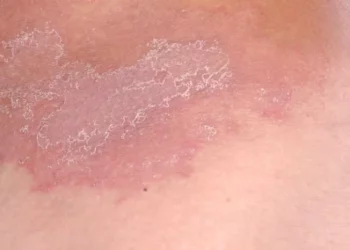Ringworm, despite its misleading name, is not caused by worms but by fungi known as dermatophytes. These fungi thrive on the outer layer of the skin and can lead to persistent and frustrating infections if not properly treated. The question of why ringworm keeps spreading on the body is multifaceted, involving factors such as the nature of the fungus, individual susceptibility, environmental conditions, and treatment efficacy.
The Nature of Ringworm Fungi
Dermatophytes responsible for ringworm infections belong to several genera, including Trichophyton, Microsporum, and Epidermophyton. These fungi have evolved to utilize keratin, a protein found in skin, hair, and nails, as their nutrient source. They produce structures called hyphae that invade the keratinized tissues, leading to characteristic ring-shaped lesions on the skin.
One reason why ringworm can spread is its ability to produce spores or conidia, which are resistant to environmental stressors and can persist in the environment for extended periods. These spores can be shed from infected skin or hair and contaminate surfaces, making it easy for others to come into contact with them and become infected.
Individual Susceptibility Factors
Not everyone exposed to ringworm fungi will develop an infection. Individual factors such as the integrity of the skin barrier, immune function, and personal hygiene practices play crucial roles in determining susceptibility. People with compromised immune systems, such as those with HIV/AIDS or undergoing chemotherapy, are particularly vulnerable to persistent or severe ringworm infections.
Skin-to-skin contact with an infected person or animal is a common mode of transmission. Moreover, sharing personal items like towels, clothing, or sports equipment can facilitate the spread of ringworm. Therefore, understanding and practicing good hygiene habits can help reduce the risk of infection and prevent the spread of ringworm.
SEE ALSO: Why Does Ringworm Spread
Environmental Factors
The environment plays a significant role in the spread of ringworm. Dermatophytes thrive in warm, moist environments such as locker rooms, swimming pools, and communal showers. These fungi can survive on contaminated surfaces and objects, making it essential to maintain cleanliness and disinfect commonly shared areas regularly.
Pets, particularly cats and dogs, can also harbor ringworm fungi. Although animals may not show symptoms, they can transmit the infection to humans through direct contact or by shedding fungal spores in their fur. Pet owners should be vigilant about monitoring their animals for signs of ringworm and seek veterinary care promptly if an infection is suspected.
Challenges in Treatment and Management
Effective treatment of ringworm depends on several factors, including the type and severity of the infection, as well as the location on the body. Topical antifungal creams or ointments are often sufficient for mild cases of ringworm. However, more extensive or persistent infections may require oral antifungal medications prescribed by a healthcare provider.
Incomplete treatment courses or failure to adhere to prescribed regimens can contribute to the recurrence or spread of ringworm. It is essential to follow healthcare provider instructions carefully, even if symptoms appear to improve, to ensure the infection is fully eradicated.
Preventive Measures and Public Health Strategies
Preventing the spread of ringworm requires a combination of personal hygiene practices and public health strategies. Individuals should avoid sharing personal items with others, especially during outbreaks of ringworm. Regular handwashing and maintaining clean living environments can also reduce the risk of infection.
Public health initiatives aimed at raising awareness about ringworm, its transmission, and prevention strategies are essential for controlling outbreaks. Educational campaigns targeting schools, childcare facilities, and sports teams can promote hygiene practices that minimize the spread of ringworm among vulnerable populations.
Conclusion
In conclusion, the persistence and spread of ringworm on the body can be attributed to a combination of factors, including the resilient nature of dermatophyte fungi, individual susceptibility, environmental conditions, and challenges in treatment and management. Understanding these factors is crucial for developing effective prevention and control strategies to reduce the burden of ringworm infections in communities. By promoting good hygiene practices, raising awareness, and ensuring prompt treatment, it is possible to mitigate the impact of ringworm and improve overall skin health and well-being.
Related Topics:

























